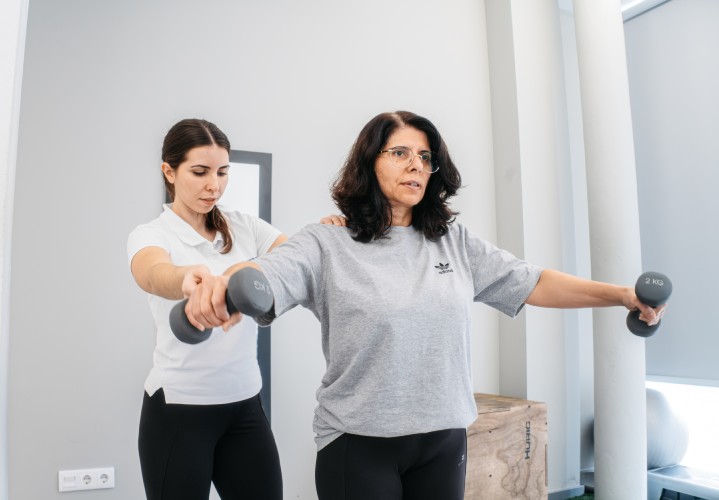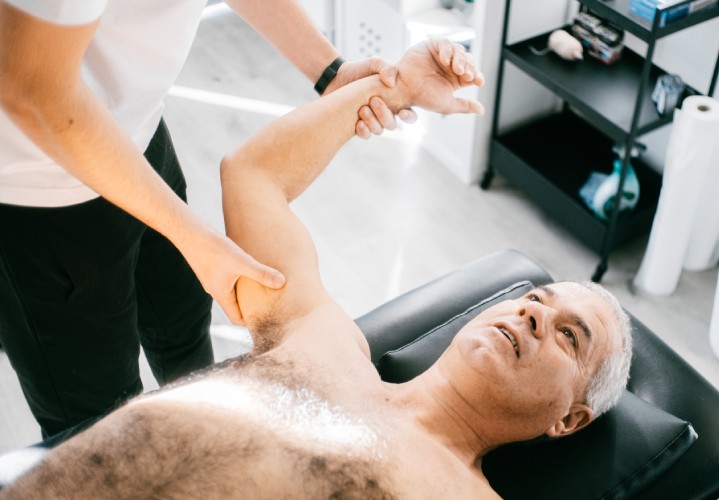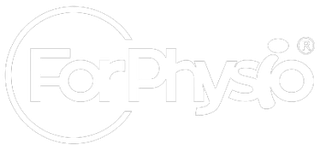SLAP Lesion in the Shoulder
Symptoms and Treatments for Recovery
- Shoulder

What is an SLAP Lesion? An SLAP (Superior Labrum Anterior to Posterior) lesion refers to an injury in the superior portion of the glenoid labrum, a cartilaginous structure that surrounds the glenoid cavity of the shoulder. The labrum acts as a kind of "shock absorber," helping stabilize the head of the humerus (upper arm bone) within the joint cavity. What Are the Symptoms? The most common symptoms of an SLAP lesion include: • Shoulder pain: especially during overhead movements or after repetitive exertion. • Feeling of instability: the shoulder may feel "out of place" or weak. • Popping or clicking sounds: unusual noises when moving the arm. • Loss of strength: difficulty performing simple tasks that require arm strength. • Limited range of motion: difficulty moving the shoulder smoothly. Who is Most Affected by SLAP Lesions? The lesion can be caused by direct trauma, such as falling onto an outstretched arm, or by repetitive and high-intensity movements, like throwing a ball or lifting weights overhead. Thus, SLAP lesions are most common in: • Athletes: especially swimmers, tennis players, and throwing athletes such as handball players, due to the repetitive and intense use of the shoulder. • Individuals over 40: natural wear and tear of the labrum over the years can make it more susceptible to these injuries. • Manual laborers: professions that require repetitive overhead movements, such as painters or carpenters. • People who have suffered trauma: falls or direct impacts can cause labrum displacement.

What is the Most Effective Treatment? Treatment for SLAP lesions can be either conservative or surgical, depending on the severity. Conservative treatment is recommended for less severe injuries. It includes modifying daily activities based on symptoms, along with complementary measures such as anti-inflammatory medications and ice application to help reduce pain and swelling. However, a key component is a personalized physical therapy program focused on strengthening the shoulder muscles and improving mobility and stability. Physical Therapy Physical therapy is an essential part of treatment, even when surgery is an option, whether before and/or after the procedure. Based on the physiotherapy treatments provided by ForPhysio professionals, here are the key recommendations for SLAP lesion recovery: Pain and Inflammation Control: • Manual therapy techniques (including manual massage, shoulder mobilization, and muscle activation) to relieve pain and swelling. Restoring Range of Motion: • Passive and active exercises to gradually restore shoulder mobility. • Gentle stretching, avoiding excessive pain or discomfort. Muscle Strengthening: • Focus on exercises for the rotator cuff (shoulder) and scapular (shoulder blade) muscles, which help stabilize the shoulder joint. Equipment such as resistance bands, dumbbells, machines, and even water-based therapy exercises may be used. Functional Reeducation: • Exercises and movements that simulate specific sports or daily activities. Reducing the Risk of Recurrence (New SLAP Injuries): • Teaching proper movement and posture techniques to prevent excessive strain on the shoulder joint. • Developing an exercise maintenance program after completing physiotherapy. Conclusion SLAP lesions can be challenging, but with an accurate diagnosis, a well-structured physiotherapy treatment plan, and specialized follow-up by a physiotherapist, most people can recover functionality and resume normal activities. If you experience shoulder pain or recognize any of the symptoms mentioned, contact us. ForPhysio offers specialized services, including individualized assessments that allow the development of a tailored treatment plan.


